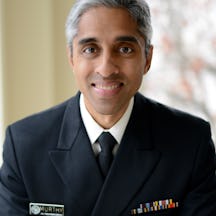Barack Obama’s former Surgeon General, Vivek Murthy, is concerned with the importance of human connection. In ‘Together’ he explores the global loneliness epidemic and how to overcome it. But, with the Covid-19 pandemic making physical contact potentially dangerous, how do we stay together while keeping apart?
How to stay together while keeping apart
Words by Vivek H Murthyphotography by Kathleen Arundellaverage reading time 6 minutes
- Book extract
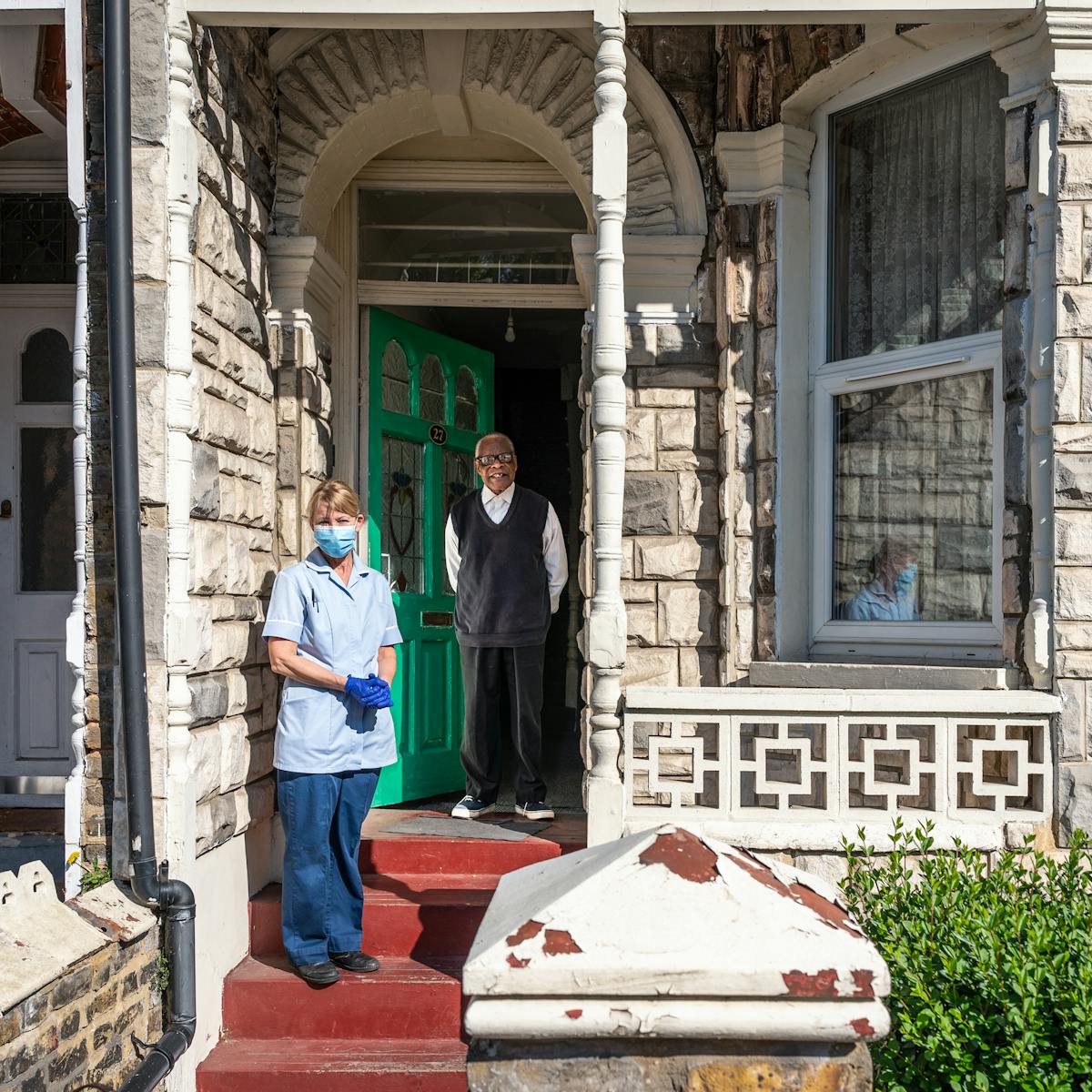
My new book ‘Together’ is about the importance of human connection, the hidden impact of loneliness on our health, and the social power of community. As a physician, I felt compelled to address these issues because of the physical and emotional toll of social disconnection that I’ve watched rising throughout society over the past few decades. What I could not anticipate, however, was the unprecedented test that our global community would face just as the book was going to press.
In the first weeks of 2020, the COVID-19 pandemic turned physical human contact into a potentially mortal threat. The novel coronavirus was on the loose, like an invisible stalker, and any of our fellow human beings could be its carrier. Almost overnight, it seemed, getting close enough to breathe on another person became synonymous with danger. The public health imperative was clear: to save lives, we’d need to radically increase the space between us.
We all depend on each other
As I write these words, we are still in the middle of this pandemic. With health workers at risk, hospital equipment in short supply, and death rates from the coronavirus spiking by the day, governments the world over have mandated ‘social distancing’, closed schools and most businesses, and ordered everyone but essential service workers to stay home.
Those first responders, healthcare and food-supply workers, and others who must stay on the job to protect us are now putting their lives on the line. They remind us just how much we depend on each other.
In response, parents like my wife Alice and I have cancelled our children’s play dates. Nursing homes have banned visits to the elderly, who are most at risk from this virus. And engaged couples must postpone their long-planned wedding celebrations. So much of the socialising that we all took for granted – concerts, ball games, movies and meals with friends, office banter and congregational worship – suddenly is on hold.
In pictures
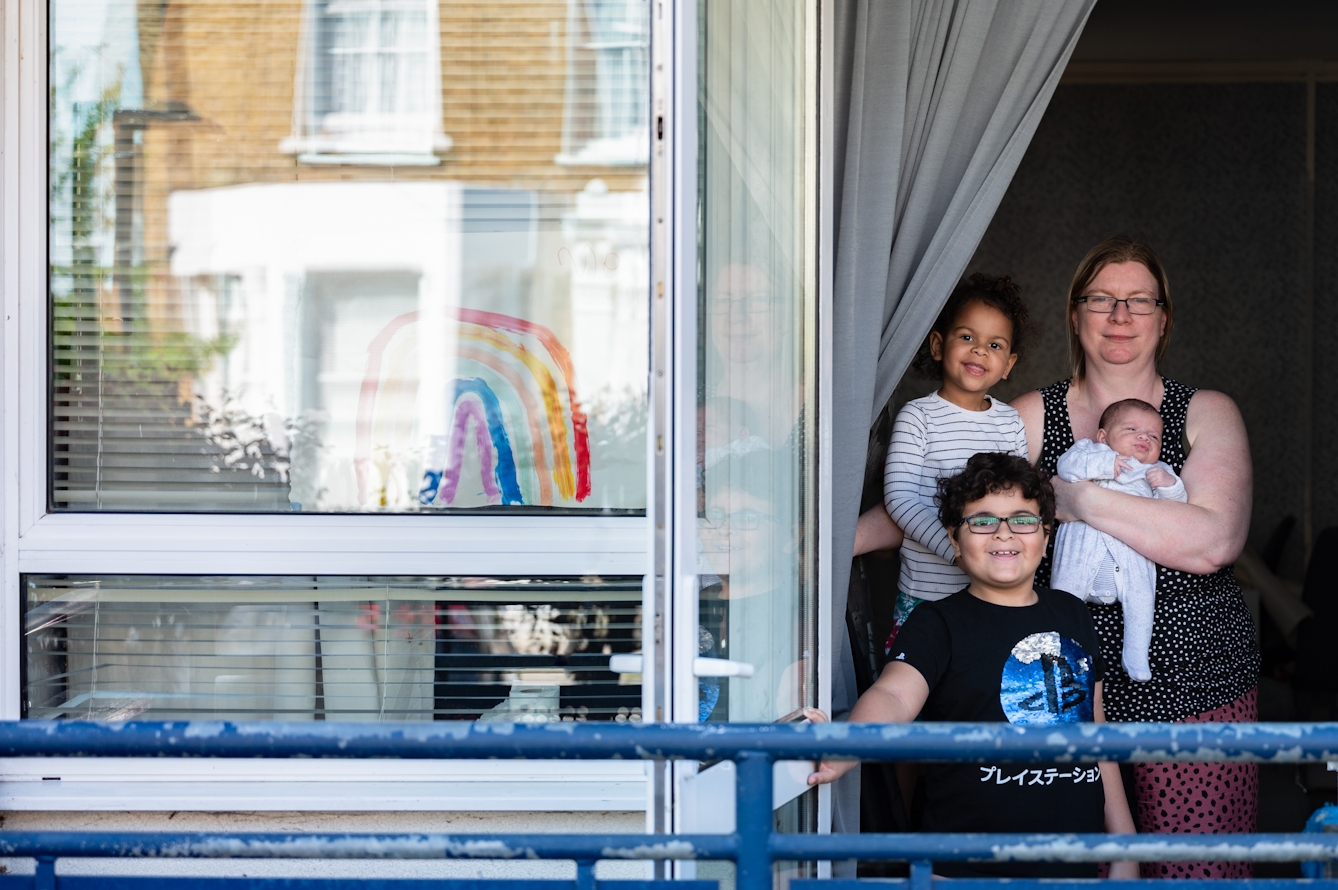
Debbie and her children were inspired to create their own rainbow picture, having seen them in other people's windows. Debbie says, “We weren’t able to leave the house for four weeks due to sickness. Lots of my neighbours have helped me through, including bringing me a thermometer late one night. My daughter said she wanted the rainbow to make the virus go away.”
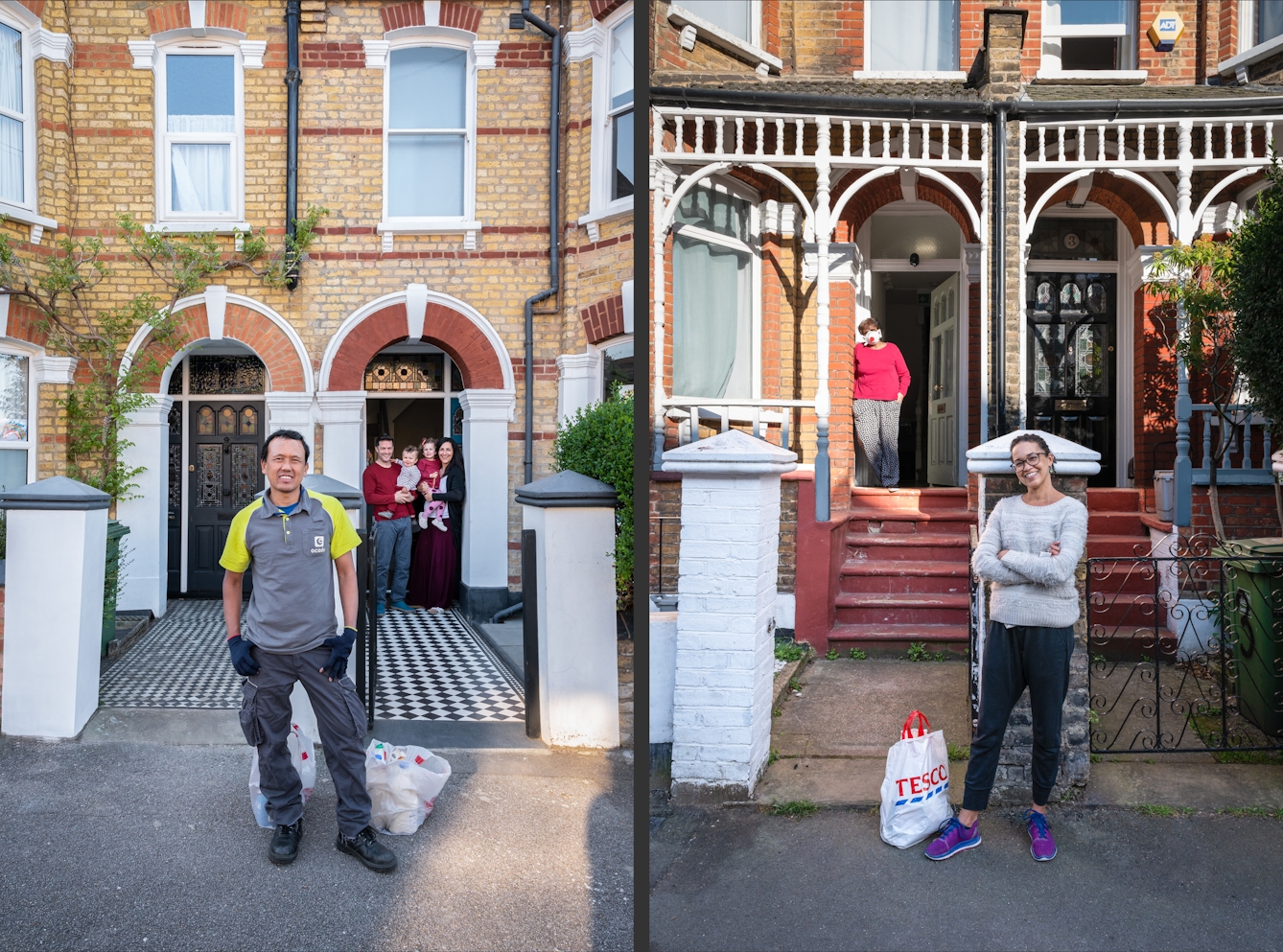
Yianna and Brendan (left image) appreciate that without those workers who are making essential deliveries, they wouldn’t be able to stay at home and help prevent the spread of COVID-19. Souki (right image) is shielding as she has a condition that affects her lungs. Gillian, helping deliver food for a local WhatsApp group says, "I’ve always wanted to know my neighbours, but our busy lives prevent us. Helping where I can has been a pleasure. I hope we can find a way to keep the community spirit alive."
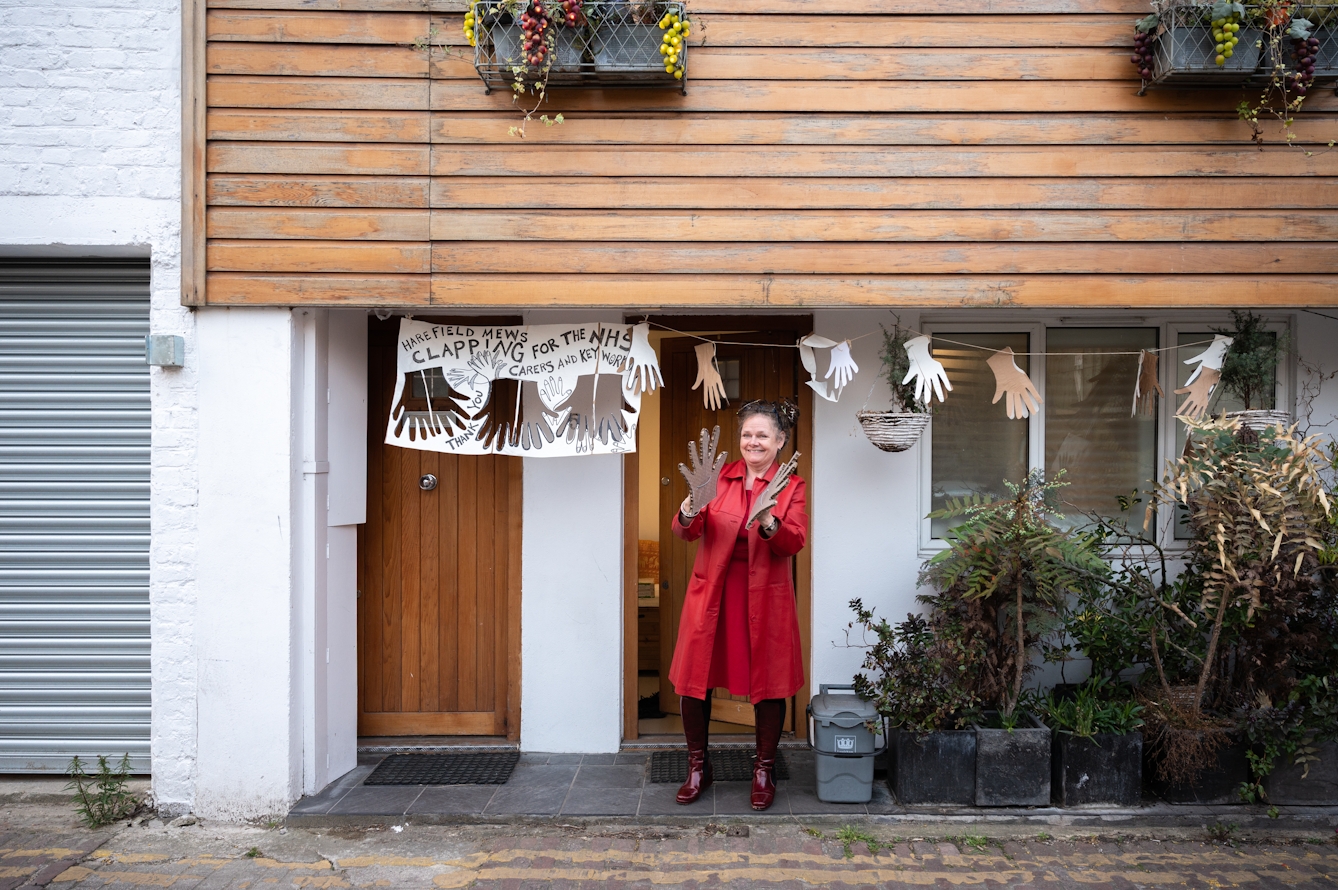
Jacqui is a local artist who joins her neighbours every Thursday at 20:00, "...from windows, doorways and gates we play a bugle, bang pots and pans, fly flags and clap our hands to support the NHS, carers, key workers and each other.”
The importance of shared experience
It seemed at first that this crisis must inevitably lead to social, as well as physical, isolation. If we could not meet, how could we connect? If we could not share the same space, how could we help each other? If we could not touch, how could we love? Even that term, social distancing, seemed to condemn us to loneliness.
And then there was the issue of trust. Fear of infection and panic over the potential economic fallout drove some to ignore the official mandates and hoard emergency supplies. Alongside the looming spectre of a global financial recession rose an equally disturbing prospect of social recession – a fraying of communal bonds that deepens in severity the longer we go without human interaction.
As the pandemic continues, however, it becomes ever clearer that social distancing is a misnomer. To be sure, we must practice physical distancing to stop the spread of COVID-19, but socially, we may emerge from this crisis feeling closer to friends and family members than ever before.
Each day brings new examples of our communal ingenuity as we meet this crisis together. In Italy, one of the hardest-hit countries, neighbours isolated in their homes have found shared comfort by singing from their windows in unison. In China, patients in quarantine units have turned to square dancing to lift their spirits as they recuperate.
And all over the world, families, friends and strangers have been performing acts of generosity – bringing groceries to the ill and elderly, calling to check on vulnerable neighbours, and sharing local updates on everything from grocery-store hours to the availability of toilet paper (who knew that toilet paper would be such a hot commodity in a pandemic!).
In pictures
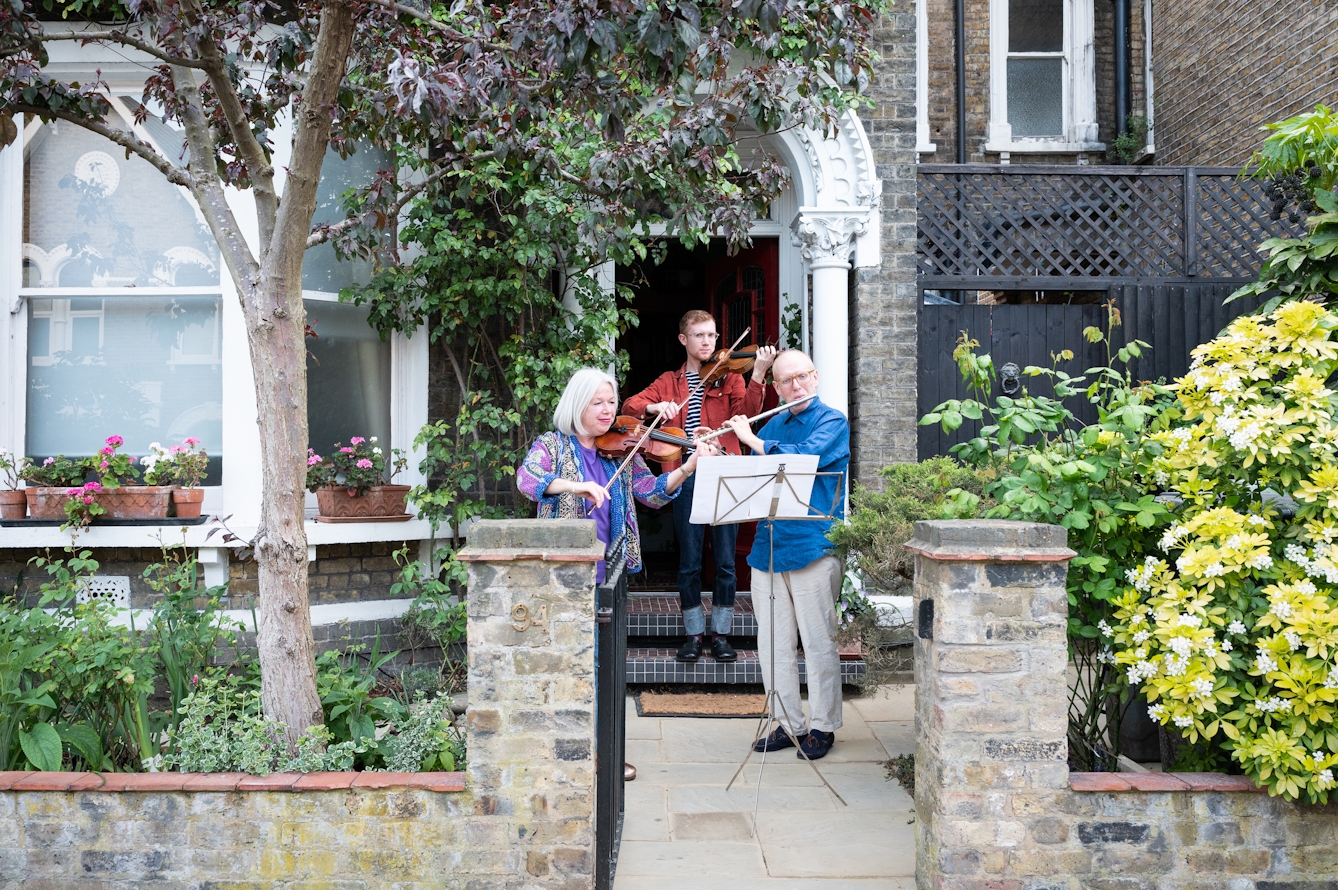
Theresa, George and son Sebastian all make their living from music. "The lockdown has given all of the community a chance to do something for the common good. We know that music brings people together and so we invited our end of the street to a joint performance of ‘Ode to Joy’ after Clap for Carers with new words to thank the NHS." Next week they are thinking of performing 'Somewhere Over the Rainbow'.
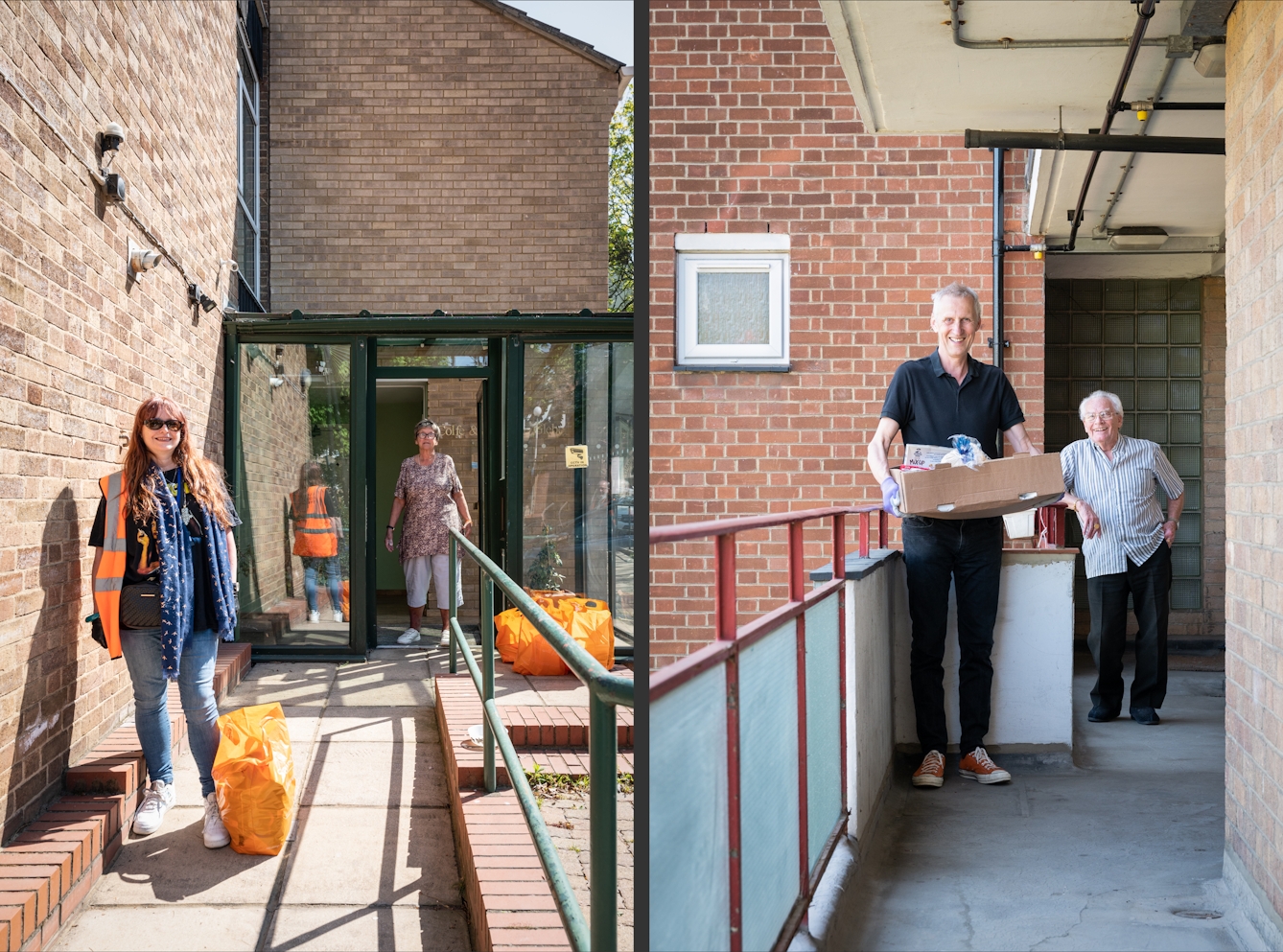
Sally (left image) is a volunteer for a community transport scheme who would normally help people like Gillian go out to do their own shopping. Now Sally brings shopping to them. Sally's noticed how “... it’s their opportunity to socialise that has diminished. People want to stop and chat for longer each week.” Kenneth (right image) receives a food box during lockdown. Martin, a volunteer says, “I am happy to be helping delivering food boxes. It is connecting us to the wider community.”
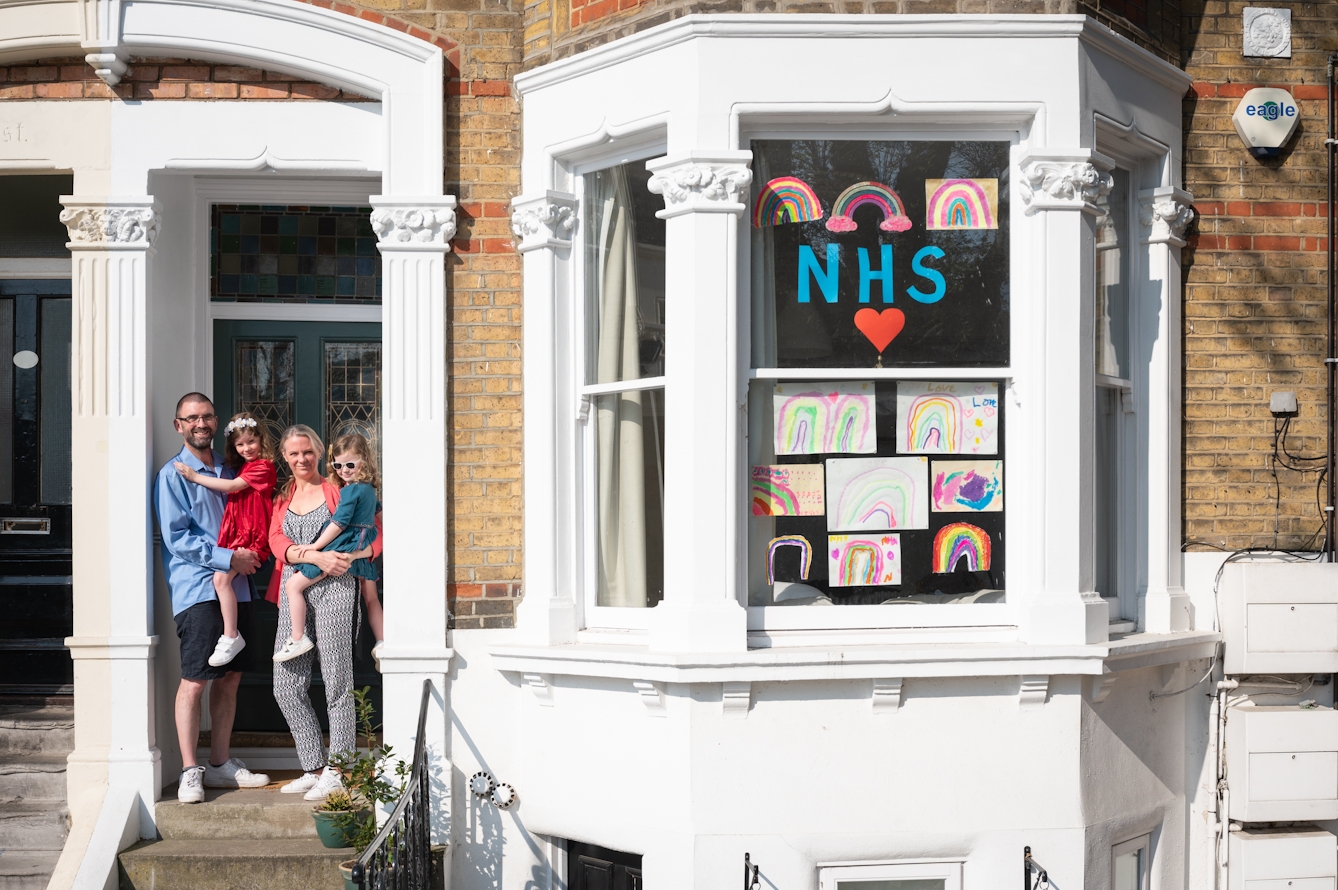
Matt and Cath found that drawing rainbows really struck a chord with them. "Our eldest daughter is called Iris, which means rainbow in Greek mythology. She had a serious illness when very young and spent a couple of weeks on a ventilator in ICU, receiving dedicated care from the NHS. We understand how challenging this work is and wanted to show our gratitude."
Stepping into the virtual world
We are fortunate today that technology offers us ready opportunities to strengthen our connections remotely. The pandemic is inspiring creativity online as artists dance and sing together through videos from home. Families celebrate birthdays through FaceTime. Audiences enjoy live opera performances streamed over the internet, and students, from kindergartners to doctoral candidates, meet in classes online.
As we learn to play, work and collaborate virtually, we are helping each other fend off loneliness and reminding each other just how vital we are to our mutual resilience.
I’m struck by how many of the lessons I learned while writing this book now have immediate relevance. By strengthening our social connections we can fortify our communities and protect each other. Four key strategies will help us not only to weather this crisis, but also to heal our social world far into the future.
1. Spend time each day with those you love
This is not limited to the people in your immediate household. Reach out also to the other members of your lifeline via phone or, better yet, videoconference, so you can hear their voice and see their face. Devote at least 15 minutes each day to connecting with those you most care about.
2. Focus on each other
Try to eliminate distractions when interacting with others. Forget about multitasking and give the other person the gift of your full attention, making eye contact if possible, and genuinely listening.
3. Embrace solitude
The first step toward building stronger connections with others is to build a stronger connection with oneself. Solitude helps us do that by allowing us to check in with our own feelings and thoughts, to explore our creativity, to connect with nature. Meditation, prayer, art, music and time spent outdoors can all be sources of solitary comfort and joy.
4. Help and be helped
Service is a form of human connection that reminds us of our value and purpose in life. Giving and receiving both strengthen our social bonds, so checking on a neighbour, seeking advice, even just offering a smile to a stranger six feet away can all make us stronger.
We’re better together
I once had a physician mentor who would pause and take a deep breath before he entered a patient’s room, using those few seconds to remind himself how grateful he was for the chance to help someone heal. Today we all share this opportunity. Healthy relationships are as essential as vaccines and ventilators for our global recovery.
This pandemic isn’t the first and won’t be the last time our social connections are tested, but it is rare for the whole world to face such a grave challenge simultaneously. For all our differences, our shared experience is itself a bond. We will have this memory in common for the rest of our lives. And if we learn from this moment to be better together, we won’t just endure this crisis. We will thrive.
‘Together’ is out now.
About the contributors
Vivek H Murthy
Dr Vivek H Murthy is a physician, researcher, public health expert and entrepreneur. From 2014 to 2017 he served as the 19th Surgeon General of the United States. His writings have been published in leading medical journals, newspapers and magazines, and his work has been covered extensively in national and international media.
Kathleen Arundell
Kathleen is a freelance photographer working in the culture and heritage sector. She works in a range of museums across London, and loves all things science and art.
